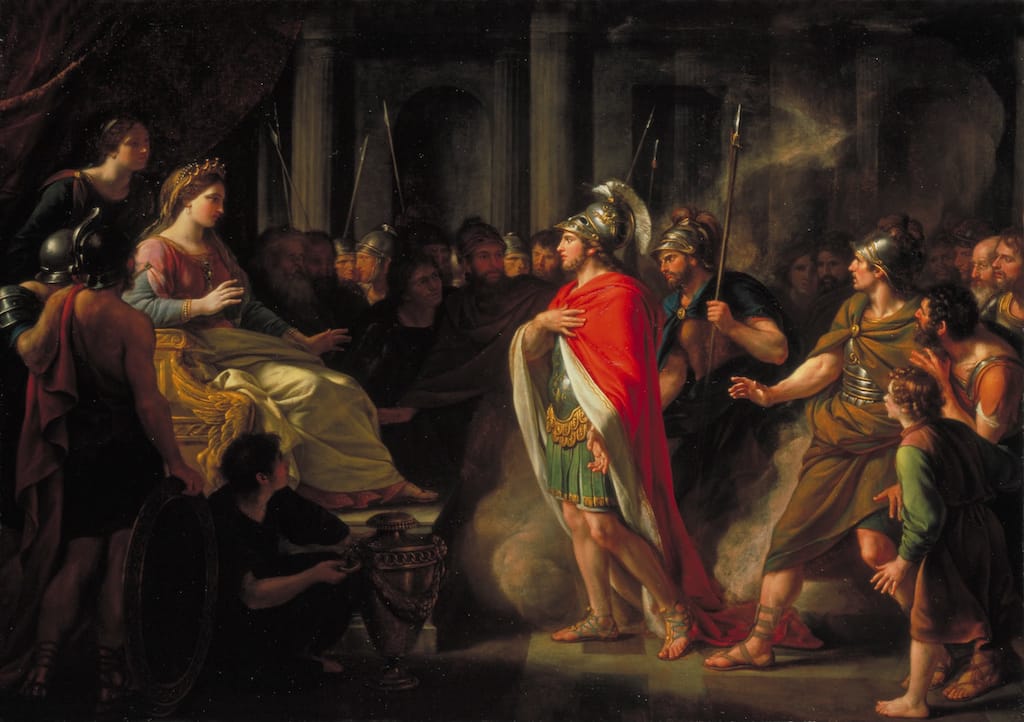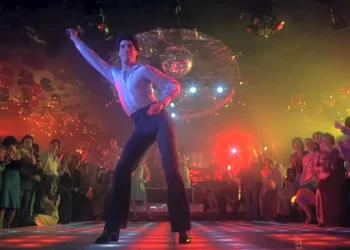Dido and Aeneas by Henry Purcell is a Baroque masterpiece mixing profound emotion, beautiful music, and timeless themes of affection and future. Its iconic lament, “When I’m laid in earth,” stays an operatic touchstone.

Henry Purcell’s Dido and Aeneas stands as one of many crowning achievements of Baroque opera, and one of many earliest examples of English opera. Composed round 1689, this tragic work is well known not just for its emotional depth and musical sophistication but in addition for its cultural and historic significance. For a discerning viewers conversant in the nuances of classical music, Dido and Aeneas gives a wealth of perception into the event of opera, the artistry of Purcell, and the broader cultural context of late Seventeenth-century England.
The Historic and Cultural Context
The late Seventeenth century was a turbulent interval in England’s historical past. The English Civil Conflict, the Interregnum, and the next Restoration of the monarchy beneath Charles II in 1660 reshaped the nation’s cultural and creative panorama. Charles II, impressed by French opera and ballet, inspired the event of English music and theatre, paving the way in which for composers like Henry Purcell to thrive.
Opera as a style was nonetheless discovering its footing in England throughout this era. Not like Italy, the place opera had change into a dominant artwork kind, English audiences have been extra accustomed to masques—a hybrid of drama, music, and dance. Dido and Aeneas displays this transitional interval, mixing components of the masque with the structural integrity of Italian opera, making a distinctly English work.
The Story: Tragedy in Three Acts
The libretto, penned by Nahum Tate, is customized from E book IV of Virgil’s Aeneid, recounting the ill-fated love between Dido, the Queen of Carthage, and Aeneas, a Trojan prince. The plot is condensed into three acts, balancing dramatic rigidity with emotional resonance.
- Act I introduces Dido in her court docket, expressing her doubts about her love for Aeneas. Her confidante, Belinda, reassures her, and the court docket celebrates the union of the 2 lovers.
- Act II reveals the machinations of a Sorceress and her witches, who conspire to destroy Carthage and Dido. A spirit disguised as Mercury instructs Aeneas to depart Carthage and fulfil his future of founding Rome.
- Act III portrays Dido’s heartbreak as Aeneas prepares to depart. Regardless of his provide to remain, she refuses, viewing his departure as inevitable. The opera concludes with Dido’s poignant lament, “When I’m laid in earth,” as she resigns herself to loss of life.
Musical Highlights
Purcell’s rating is a masterclass in financial system and expression, with every be aware serving the drama and emotional trajectory of the story.
- Overture and Dance Actions
The French-style overture units the tone with its stately opening and energetic fugal part. Dance interludes, together with the Sailors’ Refrain in Act III, infuse the work with power and distinction. - Arioso and Recitative
Purcell seamlessly blends arioso and recitative, making a fluid narrative. The dialogue between Dido and Belinda in Act I exemplifies this, with music that mirrors their shifting feelings. - Choruses
The choruses in Dido and Aeneas serve a number of roles, from commenting on the motion to heightening the dramatic stakes. The witches’ refrain, “Ho ho ho,” is each menacing and darkly humorous, whereas the ultimate refrain mourns Dido’s loss of life with solemn magnificence. - Dido’s Lament
The aria “When I’m laid in earth” is the opera’s emotional centrepiece. The descending floor bass, an indicator of Baroque composition, underpins Dido’s sorrow, creating a way of inexorable destiny. The plaintive melody, paired with Purcell’s delicate textual content setting, captures the universality of grief, making this aria one of the vital celebrated in operatic historical past.
Themes and Symbolism
Dido and Aeneas explores timeless themes of affection, obligation, betrayal, and destiny. The battle between private need and bigger obligations is central to the tragedy. Aeneas’ departure, pushed by divine intervention, highlights the strain between human company and future.
The position of the supernatural, embodied by the Sorceress and her witches, provides a layer of complexity. Their malevolent affect serves as a metaphor for the chaos and destruction that threaten Carthage and Dido’s happiness.
Dido herself is a richly drawn character, embodying each regal dignity and profound vulnerability. Her ultimate lament is not only a private farewell however a commentary on the fragility of human life and the enduring ache of unfulfilled love.
Efficiency Historical past and Reception
The premiere of Dido and Aeneas possible came about at Josias Priest’s ladies’ college in Chelsea, a modest venue for a piece of such emotional and musical grandeur. This intimate setting might clarify the opera’s concise construction and the prominence of the refrain, which allowed for larger participation by the scholars.
After its preliminary performances, Dido and Aeneas fell into obscurity, as public curiosity in opera waned in England. It was not till the early twentieth century that the work was revived, gaining recognition as considered one of Purcell’s masterpieces. At the moment, it’s a staple of the operatic repertoire, admired for its expressive energy and timeless attraction.
Interpretations and Variations
Administrators and performers have approached Dido and Aeneas in myriad methods, from traditionally knowledgeable performances with interval devices to trendy stagings that emphasize its psychological and emotional depths. The opera’s brevity and flexibility make it appropriate for each grand productions and chamber settings.
One notable interpretation is the exploration of Dido’s character as a logo of feminine company and resilience. Modern productions usually spotlight her energy in going through her tragic destiny, providing a feminist studying of the narrative.
Purcell’s Legacy
Henry Purcell’s contribution to English music is immeasurable, and Dido and Aeneas stays considered one of his most enduring works. By its synthesis of French, Italian, and English influences, the opera exemplifies Purcell’s genius for mixing disparate types right into a cohesive complete.
Purcell’s use of floor bass, phrase portray, and dramatic distinction set a precedent for future composers. His means to seize the emotional essence of a textual content influenced later English composers, together with Benjamin Britten, who drew inspiration from Purcell in works like The Rape of Lucretia.
Conclusion
Dido and Aeneas is greater than an opera; it’s a testomony to the transformative energy of music and storytelling. For a contemporary viewers, the work resonates with its exploration of common themes and its beautiful musical craftsmanship. As a cornerstone of the Baroque repertoire, it invitations listeners to replicate on the enduring legacy of Henry Purcell and the timeless attraction of his artwork.
Dido and Aeneas by Henry Purcell is a Baroque masterpiece mixing profound emotion, beautiful music, and timeless themes of affection and future. Its iconic lament, “When I’m laid in earth,” stays an operatic touchstone.

Henry Purcell’s Dido and Aeneas stands as one of many crowning achievements of Baroque opera, and one of many earliest examples of English opera. Composed round 1689, this tragic work is well known not just for its emotional depth and musical sophistication but in addition for its cultural and historic significance. For a discerning viewers conversant in the nuances of classical music, Dido and Aeneas gives a wealth of perception into the event of opera, the artistry of Purcell, and the broader cultural context of late Seventeenth-century England.
The Historic and Cultural Context
The late Seventeenth century was a turbulent interval in England’s historical past. The English Civil Conflict, the Interregnum, and the next Restoration of the monarchy beneath Charles II in 1660 reshaped the nation’s cultural and creative panorama. Charles II, impressed by French opera and ballet, inspired the event of English music and theatre, paving the way in which for composers like Henry Purcell to thrive.
Opera as a style was nonetheless discovering its footing in England throughout this era. Not like Italy, the place opera had change into a dominant artwork kind, English audiences have been extra accustomed to masques—a hybrid of drama, music, and dance. Dido and Aeneas displays this transitional interval, mixing components of the masque with the structural integrity of Italian opera, making a distinctly English work.
The Story: Tragedy in Three Acts
The libretto, penned by Nahum Tate, is customized from E book IV of Virgil’s Aeneid, recounting the ill-fated love between Dido, the Queen of Carthage, and Aeneas, a Trojan prince. The plot is condensed into three acts, balancing dramatic rigidity with emotional resonance.
- Act I introduces Dido in her court docket, expressing her doubts about her love for Aeneas. Her confidante, Belinda, reassures her, and the court docket celebrates the union of the 2 lovers.
- Act II reveals the machinations of a Sorceress and her witches, who conspire to destroy Carthage and Dido. A spirit disguised as Mercury instructs Aeneas to depart Carthage and fulfil his future of founding Rome.
- Act III portrays Dido’s heartbreak as Aeneas prepares to depart. Regardless of his provide to remain, she refuses, viewing his departure as inevitable. The opera concludes with Dido’s poignant lament, “When I’m laid in earth,” as she resigns herself to loss of life.
Musical Highlights
Purcell’s rating is a masterclass in financial system and expression, with every be aware serving the drama and emotional trajectory of the story.
- Overture and Dance Actions
The French-style overture units the tone with its stately opening and energetic fugal part. Dance interludes, together with the Sailors’ Refrain in Act III, infuse the work with power and distinction. - Arioso and Recitative
Purcell seamlessly blends arioso and recitative, making a fluid narrative. The dialogue between Dido and Belinda in Act I exemplifies this, with music that mirrors their shifting feelings. - Choruses
The choruses in Dido and Aeneas serve a number of roles, from commenting on the motion to heightening the dramatic stakes. The witches’ refrain, “Ho ho ho,” is each menacing and darkly humorous, whereas the ultimate refrain mourns Dido’s loss of life with solemn magnificence. - Dido’s Lament
The aria “When I’m laid in earth” is the opera’s emotional centrepiece. The descending floor bass, an indicator of Baroque composition, underpins Dido’s sorrow, creating a way of inexorable destiny. The plaintive melody, paired with Purcell’s delicate textual content setting, captures the universality of grief, making this aria one of the vital celebrated in operatic historical past.
Themes and Symbolism
Dido and Aeneas explores timeless themes of affection, obligation, betrayal, and destiny. The battle between private need and bigger obligations is central to the tragedy. Aeneas’ departure, pushed by divine intervention, highlights the strain between human company and future.
The position of the supernatural, embodied by the Sorceress and her witches, provides a layer of complexity. Their malevolent affect serves as a metaphor for the chaos and destruction that threaten Carthage and Dido’s happiness.
Dido herself is a richly drawn character, embodying each regal dignity and profound vulnerability. Her ultimate lament is not only a private farewell however a commentary on the fragility of human life and the enduring ache of unfulfilled love.
Efficiency Historical past and Reception
The premiere of Dido and Aeneas possible came about at Josias Priest’s ladies’ college in Chelsea, a modest venue for a piece of such emotional and musical grandeur. This intimate setting might clarify the opera’s concise construction and the prominence of the refrain, which allowed for larger participation by the scholars.
After its preliminary performances, Dido and Aeneas fell into obscurity, as public curiosity in opera waned in England. It was not till the early twentieth century that the work was revived, gaining recognition as considered one of Purcell’s masterpieces. At the moment, it’s a staple of the operatic repertoire, admired for its expressive energy and timeless attraction.
Interpretations and Variations
Administrators and performers have approached Dido and Aeneas in myriad methods, from traditionally knowledgeable performances with interval devices to trendy stagings that emphasize its psychological and emotional depths. The opera’s brevity and flexibility make it appropriate for each grand productions and chamber settings.
One notable interpretation is the exploration of Dido’s character as a logo of feminine company and resilience. Modern productions usually spotlight her energy in going through her tragic destiny, providing a feminist studying of the narrative.
Purcell’s Legacy
Henry Purcell’s contribution to English music is immeasurable, and Dido and Aeneas stays considered one of his most enduring works. By its synthesis of French, Italian, and English influences, the opera exemplifies Purcell’s genius for mixing disparate types right into a cohesive complete.
Purcell’s use of floor bass, phrase portray, and dramatic distinction set a precedent for future composers. His means to seize the emotional essence of a textual content influenced later English composers, together with Benjamin Britten, who drew inspiration from Purcell in works like The Rape of Lucretia.
Conclusion
Dido and Aeneas is greater than an opera; it’s a testomony to the transformative energy of music and storytelling. For a contemporary viewers, the work resonates with its exploration of common themes and its beautiful musical craftsmanship. As a cornerstone of the Baroque repertoire, it invitations listeners to replicate on the enduring legacy of Henry Purcell and the timeless attraction of his artwork.
Dido and Aeneas by Henry Purcell is a Baroque masterpiece mixing profound emotion, beautiful music, and timeless themes of affection and future. Its iconic lament, “When I’m laid in earth,” stays an operatic touchstone.

Henry Purcell’s Dido and Aeneas stands as one of many crowning achievements of Baroque opera, and one of many earliest examples of English opera. Composed round 1689, this tragic work is well known not just for its emotional depth and musical sophistication but in addition for its cultural and historic significance. For a discerning viewers conversant in the nuances of classical music, Dido and Aeneas gives a wealth of perception into the event of opera, the artistry of Purcell, and the broader cultural context of late Seventeenth-century England.
The Historic and Cultural Context
The late Seventeenth century was a turbulent interval in England’s historical past. The English Civil Conflict, the Interregnum, and the next Restoration of the monarchy beneath Charles II in 1660 reshaped the nation’s cultural and creative panorama. Charles II, impressed by French opera and ballet, inspired the event of English music and theatre, paving the way in which for composers like Henry Purcell to thrive.
Opera as a style was nonetheless discovering its footing in England throughout this era. Not like Italy, the place opera had change into a dominant artwork kind, English audiences have been extra accustomed to masques—a hybrid of drama, music, and dance. Dido and Aeneas displays this transitional interval, mixing components of the masque with the structural integrity of Italian opera, making a distinctly English work.
The Story: Tragedy in Three Acts
The libretto, penned by Nahum Tate, is customized from E book IV of Virgil’s Aeneid, recounting the ill-fated love between Dido, the Queen of Carthage, and Aeneas, a Trojan prince. The plot is condensed into three acts, balancing dramatic rigidity with emotional resonance.
- Act I introduces Dido in her court docket, expressing her doubts about her love for Aeneas. Her confidante, Belinda, reassures her, and the court docket celebrates the union of the 2 lovers.
- Act II reveals the machinations of a Sorceress and her witches, who conspire to destroy Carthage and Dido. A spirit disguised as Mercury instructs Aeneas to depart Carthage and fulfil his future of founding Rome.
- Act III portrays Dido’s heartbreak as Aeneas prepares to depart. Regardless of his provide to remain, she refuses, viewing his departure as inevitable. The opera concludes with Dido’s poignant lament, “When I’m laid in earth,” as she resigns herself to loss of life.
Musical Highlights
Purcell’s rating is a masterclass in financial system and expression, with every be aware serving the drama and emotional trajectory of the story.
- Overture and Dance Actions
The French-style overture units the tone with its stately opening and energetic fugal part. Dance interludes, together with the Sailors’ Refrain in Act III, infuse the work with power and distinction. - Arioso and Recitative
Purcell seamlessly blends arioso and recitative, making a fluid narrative. The dialogue between Dido and Belinda in Act I exemplifies this, with music that mirrors their shifting feelings. - Choruses
The choruses in Dido and Aeneas serve a number of roles, from commenting on the motion to heightening the dramatic stakes. The witches’ refrain, “Ho ho ho,” is each menacing and darkly humorous, whereas the ultimate refrain mourns Dido’s loss of life with solemn magnificence. - Dido’s Lament
The aria “When I’m laid in earth” is the opera’s emotional centrepiece. The descending floor bass, an indicator of Baroque composition, underpins Dido’s sorrow, creating a way of inexorable destiny. The plaintive melody, paired with Purcell’s delicate textual content setting, captures the universality of grief, making this aria one of the vital celebrated in operatic historical past.
Themes and Symbolism
Dido and Aeneas explores timeless themes of affection, obligation, betrayal, and destiny. The battle between private need and bigger obligations is central to the tragedy. Aeneas’ departure, pushed by divine intervention, highlights the strain between human company and future.
The position of the supernatural, embodied by the Sorceress and her witches, provides a layer of complexity. Their malevolent affect serves as a metaphor for the chaos and destruction that threaten Carthage and Dido’s happiness.
Dido herself is a richly drawn character, embodying each regal dignity and profound vulnerability. Her ultimate lament is not only a private farewell however a commentary on the fragility of human life and the enduring ache of unfulfilled love.
Efficiency Historical past and Reception
The premiere of Dido and Aeneas possible came about at Josias Priest’s ladies’ college in Chelsea, a modest venue for a piece of such emotional and musical grandeur. This intimate setting might clarify the opera’s concise construction and the prominence of the refrain, which allowed for larger participation by the scholars.
After its preliminary performances, Dido and Aeneas fell into obscurity, as public curiosity in opera waned in England. It was not till the early twentieth century that the work was revived, gaining recognition as considered one of Purcell’s masterpieces. At the moment, it’s a staple of the operatic repertoire, admired for its expressive energy and timeless attraction.
Interpretations and Variations
Administrators and performers have approached Dido and Aeneas in myriad methods, from traditionally knowledgeable performances with interval devices to trendy stagings that emphasize its psychological and emotional depths. The opera’s brevity and flexibility make it appropriate for each grand productions and chamber settings.
One notable interpretation is the exploration of Dido’s character as a logo of feminine company and resilience. Modern productions usually spotlight her energy in going through her tragic destiny, providing a feminist studying of the narrative.
Purcell’s Legacy
Henry Purcell’s contribution to English music is immeasurable, and Dido and Aeneas stays considered one of his most enduring works. By its synthesis of French, Italian, and English influences, the opera exemplifies Purcell’s genius for mixing disparate types right into a cohesive complete.
Purcell’s use of floor bass, phrase portray, and dramatic distinction set a precedent for future composers. His means to seize the emotional essence of a textual content influenced later English composers, together with Benjamin Britten, who drew inspiration from Purcell in works like The Rape of Lucretia.
Conclusion
Dido and Aeneas is greater than an opera; it’s a testomony to the transformative energy of music and storytelling. For a contemporary viewers, the work resonates with its exploration of common themes and its beautiful musical craftsmanship. As a cornerstone of the Baroque repertoire, it invitations listeners to replicate on the enduring legacy of Henry Purcell and the timeless attraction of his artwork.
Dido and Aeneas by Henry Purcell is a Baroque masterpiece mixing profound emotion, beautiful music, and timeless themes of affection and future. Its iconic lament, “When I’m laid in earth,” stays an operatic touchstone.

Henry Purcell’s Dido and Aeneas stands as one of many crowning achievements of Baroque opera, and one of many earliest examples of English opera. Composed round 1689, this tragic work is well known not just for its emotional depth and musical sophistication but in addition for its cultural and historic significance. For a discerning viewers conversant in the nuances of classical music, Dido and Aeneas gives a wealth of perception into the event of opera, the artistry of Purcell, and the broader cultural context of late Seventeenth-century England.
The Historic and Cultural Context
The late Seventeenth century was a turbulent interval in England’s historical past. The English Civil Conflict, the Interregnum, and the next Restoration of the monarchy beneath Charles II in 1660 reshaped the nation’s cultural and creative panorama. Charles II, impressed by French opera and ballet, inspired the event of English music and theatre, paving the way in which for composers like Henry Purcell to thrive.
Opera as a style was nonetheless discovering its footing in England throughout this era. Not like Italy, the place opera had change into a dominant artwork kind, English audiences have been extra accustomed to masques—a hybrid of drama, music, and dance. Dido and Aeneas displays this transitional interval, mixing components of the masque with the structural integrity of Italian opera, making a distinctly English work.
The Story: Tragedy in Three Acts
The libretto, penned by Nahum Tate, is customized from E book IV of Virgil’s Aeneid, recounting the ill-fated love between Dido, the Queen of Carthage, and Aeneas, a Trojan prince. The plot is condensed into three acts, balancing dramatic rigidity with emotional resonance.
- Act I introduces Dido in her court docket, expressing her doubts about her love for Aeneas. Her confidante, Belinda, reassures her, and the court docket celebrates the union of the 2 lovers.
- Act II reveals the machinations of a Sorceress and her witches, who conspire to destroy Carthage and Dido. A spirit disguised as Mercury instructs Aeneas to depart Carthage and fulfil his future of founding Rome.
- Act III portrays Dido’s heartbreak as Aeneas prepares to depart. Regardless of his provide to remain, she refuses, viewing his departure as inevitable. The opera concludes with Dido’s poignant lament, “When I’m laid in earth,” as she resigns herself to loss of life.
Musical Highlights
Purcell’s rating is a masterclass in financial system and expression, with every be aware serving the drama and emotional trajectory of the story.
- Overture and Dance Actions
The French-style overture units the tone with its stately opening and energetic fugal part. Dance interludes, together with the Sailors’ Refrain in Act III, infuse the work with power and distinction. - Arioso and Recitative
Purcell seamlessly blends arioso and recitative, making a fluid narrative. The dialogue between Dido and Belinda in Act I exemplifies this, with music that mirrors their shifting feelings. - Choruses
The choruses in Dido and Aeneas serve a number of roles, from commenting on the motion to heightening the dramatic stakes. The witches’ refrain, “Ho ho ho,” is each menacing and darkly humorous, whereas the ultimate refrain mourns Dido’s loss of life with solemn magnificence. - Dido’s Lament
The aria “When I’m laid in earth” is the opera’s emotional centrepiece. The descending floor bass, an indicator of Baroque composition, underpins Dido’s sorrow, creating a way of inexorable destiny. The plaintive melody, paired with Purcell’s delicate textual content setting, captures the universality of grief, making this aria one of the vital celebrated in operatic historical past.
Themes and Symbolism
Dido and Aeneas explores timeless themes of affection, obligation, betrayal, and destiny. The battle between private need and bigger obligations is central to the tragedy. Aeneas’ departure, pushed by divine intervention, highlights the strain between human company and future.
The position of the supernatural, embodied by the Sorceress and her witches, provides a layer of complexity. Their malevolent affect serves as a metaphor for the chaos and destruction that threaten Carthage and Dido’s happiness.
Dido herself is a richly drawn character, embodying each regal dignity and profound vulnerability. Her ultimate lament is not only a private farewell however a commentary on the fragility of human life and the enduring ache of unfulfilled love.
Efficiency Historical past and Reception
The premiere of Dido and Aeneas possible came about at Josias Priest’s ladies’ college in Chelsea, a modest venue for a piece of such emotional and musical grandeur. This intimate setting might clarify the opera’s concise construction and the prominence of the refrain, which allowed for larger participation by the scholars.
After its preliminary performances, Dido and Aeneas fell into obscurity, as public curiosity in opera waned in England. It was not till the early twentieth century that the work was revived, gaining recognition as considered one of Purcell’s masterpieces. At the moment, it’s a staple of the operatic repertoire, admired for its expressive energy and timeless attraction.
Interpretations and Variations
Administrators and performers have approached Dido and Aeneas in myriad methods, from traditionally knowledgeable performances with interval devices to trendy stagings that emphasize its psychological and emotional depths. The opera’s brevity and flexibility make it appropriate for each grand productions and chamber settings.
One notable interpretation is the exploration of Dido’s character as a logo of feminine company and resilience. Modern productions usually spotlight her energy in going through her tragic destiny, providing a feminist studying of the narrative.
Purcell’s Legacy
Henry Purcell’s contribution to English music is immeasurable, and Dido and Aeneas stays considered one of his most enduring works. By its synthesis of French, Italian, and English influences, the opera exemplifies Purcell’s genius for mixing disparate types right into a cohesive complete.
Purcell’s use of floor bass, phrase portray, and dramatic distinction set a precedent for future composers. His means to seize the emotional essence of a textual content influenced later English composers, together with Benjamin Britten, who drew inspiration from Purcell in works like The Rape of Lucretia.
Conclusion
Dido and Aeneas is greater than an opera; it’s a testomony to the transformative energy of music and storytelling. For a contemporary viewers, the work resonates with its exploration of common themes and its beautiful musical craftsmanship. As a cornerstone of the Baroque repertoire, it invitations listeners to replicate on the enduring legacy of Henry Purcell and the timeless attraction of his artwork.






















